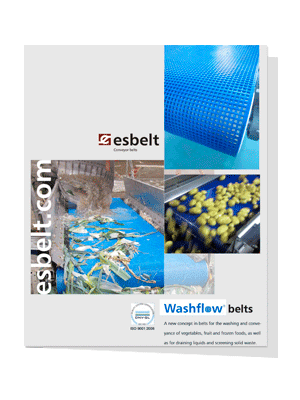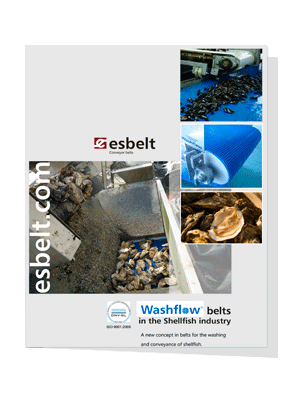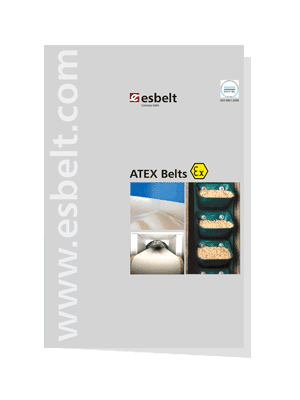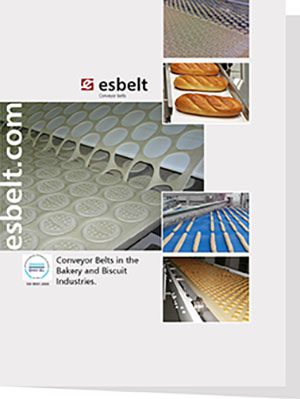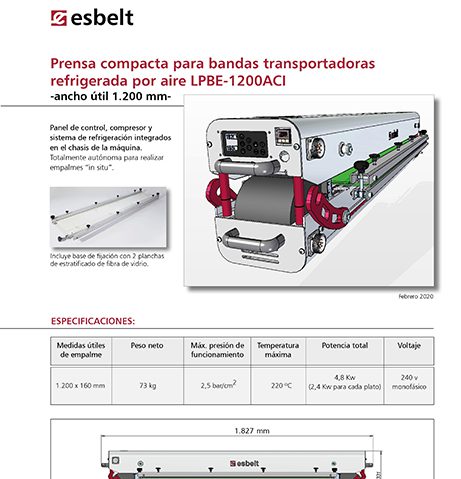When selecting a belt for an application, it is not only important to know the breaking load of the belt or the maximum force that it can withstand, but it is also key to know how much it stretches before breaking.
For optimal performance, a belt has to be well-tensioned to stay centered and stable when moving. An overly stretched belt will result in conveying problems or premature wear and tear. It is important to know the working load N/mm at 1% elongation when choosing a belt for an application, especially if it carries high load, the conveyor is very long.
The working load value N/mm at 1% is the most commonly used in conveyor belts to represent its strength. This value is equivalent to saying that for every 100mm of belt length it lengthens 1mm if this load is applied. The variation in the length of a belt, when progressive tensile force is applied in units of N (Newton), shows an elongation expressed as a percentage. The force value obtained at a given elongation corresponds to the total force for a given width.
In esbelt, we work to minimize the elongation of our conveyor belts. For this reason, Esbelt manufactures:
Belts with low elongation and multi-ply structure
The multi-layer structure of Esbelt belts evenly distributes the force on the belt, thus reducing its elongation. As the elongation is reduced, there is no need to repeatedly cut and splice the belt until the elongation is complete and set.
In summary, less elongation means a reduction in the time required to re-tension the belt (fewer stops, shorter maintenance times) and consequently, an increase in productivity.
Low elongation multi-ply Esbelt belts
=
Saving time in maintenance + increasing productivity.
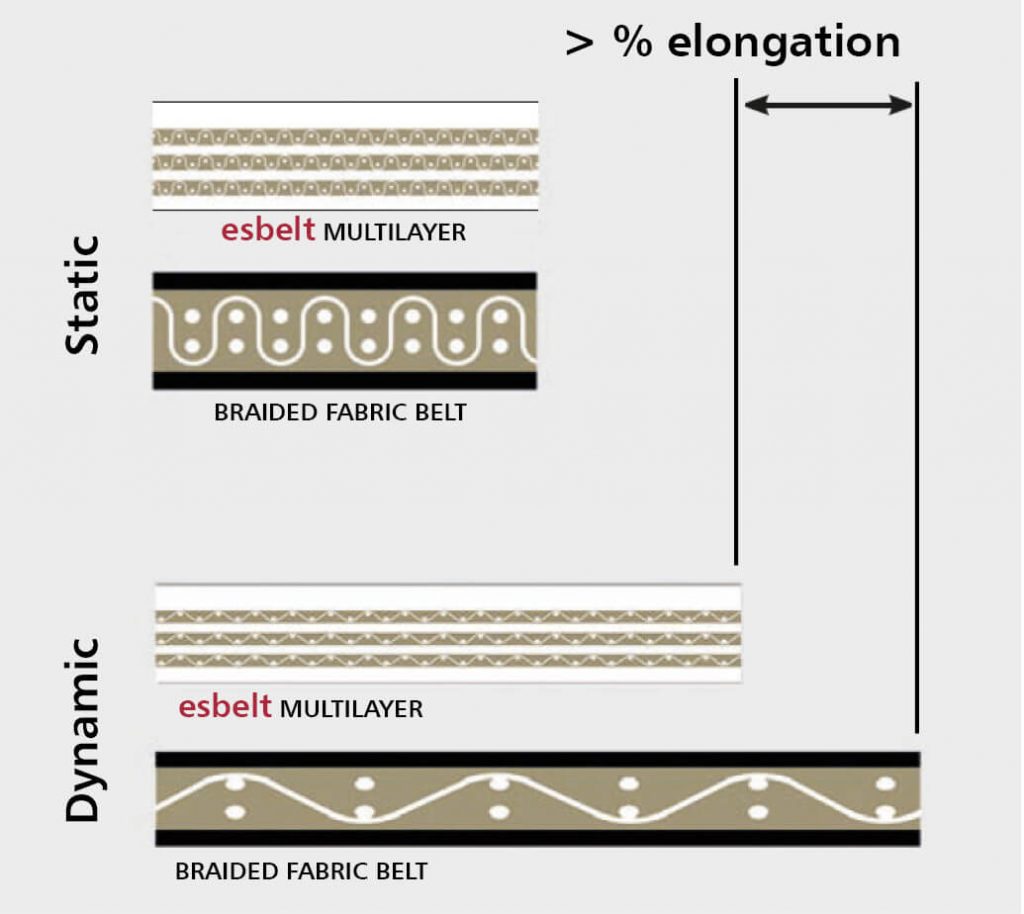
Belts with 100% polyester fabrics
The fabrics of our belts are mostly 100% polyester. As it is a synthetic fiber, it has better performance than belts with more conventional fabrics (cotton blends). Polyester fabrics have excellent mechanical resistance in difficult operating conditions, reduced risk of fibers mixing with the product, and among others, less elongation.
These features translate into longer belt life and reduced reactive maintenance times and production interruptions.
Belts with Pre-tensioned and heat-set fabrics
Besides, our fabrics are pre-tensioned and heat-set and are designed to reduce elongation, withstand high workloads, and for greater dimensional stability.
Belts with low elongation
High workload at 1% elongation
Esbelt belts with low elongation (high working load N/mm) in your applications:
Febor 41CC y Febor 91CC
Our belts in the Febor sugar series, Febor 41CC and Febor 91CC of 512-meter lengths are installed in a sugar refinery in France and after 3 years in operation, they are still in good conditions, without elongation problems, and with low maintenance.
Other successful cases include our 400-meter long FEBOR 91CC installed in a major sugar refinery in Dubai, which continues to operate without any problem.

Espot 40CC and ESPOT 81CC
A Venezuelan compound feed processing company encountered excessive elongation problems in its rubber-canvas elevator belts. After installing the Espot series, the belts remain in good condition for a longer time without the need to re-tension them. The elongation is between 20% -30% less than the previously installed belts.


